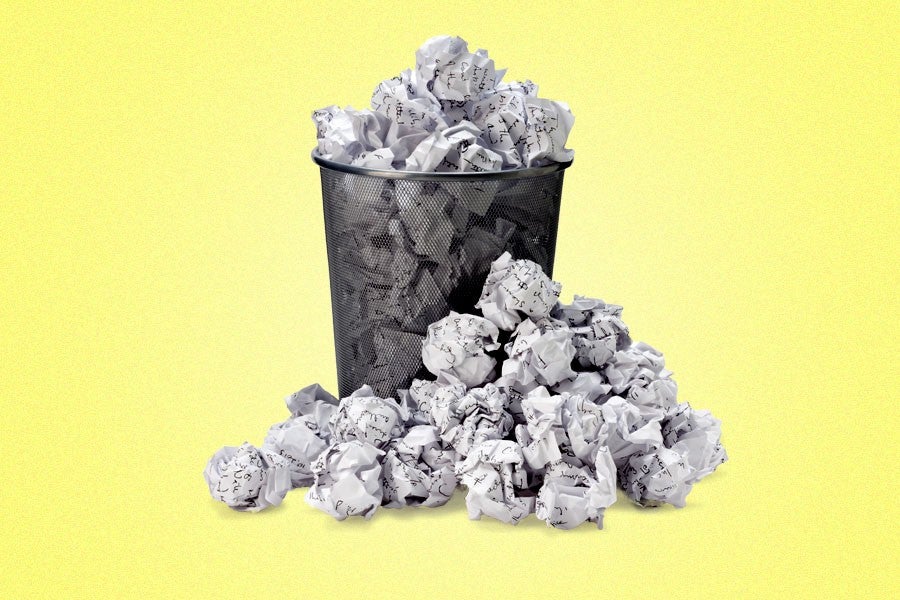I used to be obsessed with my signature. Even before the days when I’d try to piss my name in the snow, I’d practice writing my name in cursive, going through signatures more quickly than school crushes. My signature was me, and I was it. But as I grew older, my signature somehow degenerated into a couple of illegible strokes of the pen. Today, my signature is on life support.
But, like… should I care?
I’m not the only one wondering. “The signature is an artefact we don’t need any more,” Brett King, chief executive of the financial mobile app Moven told the BBC in 2014. “It’s a hold-over from many years ago. I think there will be a natural evolution where the signature dies a slow death.” And with good reason: According to the same article, the U.S. is one of the few remaining developed nations that requires signatures at the point of sale, which probably explains why the U.S. also accounts for more credit-card fraud than the rest of the world combined.
All of this means, pragmatically speaking, that your signature is about as useful today as a Myspace profile. But that doesn’t mean our instincts to want to mark things with our name just disappears, even without the inspiration of a blank notepad and another crushingly dull day in middle school. Just look at current U.S. president and foremost signature preservationist Donald Trump. He always takes an extra few seconds to make sure his signature is just so.
“His official signature — a jagged, loop-less scrawl reminiscent of a seismometer reading from a catastrophic earthquake — took about six to seven seconds and over 30 strokes to complete,” reported Quartz. “In comparison, his predecessors including left-handed Barack Obama took a second or two to scribble their executive marks.”
Whatever your feelings about our commander-in-cursive, there’s no arguing against the fact that he’s a man whose job entails the signing of myriad documents of importance (even if he does, from time to time, forget he has to do that, too).
But what about the rest of us, those whose signatures will not be placed in a historical archive beyond a shoebox full of receipts? “It’s not like a PIN,” Mike Allen, a forensic document analyst with 30 years experience told the BBC. “It’s someone making their mark and saying, ‘I agree with this.’ It’s not about being safer — the value of it is that it’s you.”
Wendy Carlson, a handwriting expert and forensic document examiner agrees. “The value is in the identity of a person putting their mark on the world,” says Carlson. “It’s their brain imprint coming on the paper.”
Luckily, if you’re like me and your brain imprint looks like crap, there’s still hope. “Your signature can be cleaned up,” Carlson tells me. While she admits that most people figure out their signature at a young age, there’s no reason why you can’t modify it as an adult if you’re unhappy with your John Hancock. “Women have to change their name when they get married, which means they have to change their signature at some point in their adult life,” says Carlson. “It’s your conscious application to create a subconscious neuromuscular pattern imprinted on a piece of paper.” In other words, it just takes practice.
To that end, WikiHow suggests experimenting and drawing inspiration from other signatures. “Look at the signatures of famous people, and consider whether you want to emulate anybody. Kurt Vonnegut, Walt Disney, Salvador Dalí, Picasso and John Hancock (among many others) are all known for their unique signature styles. Don’t be afraid to borrow eye-catching elements and add them to your own signature,” reports WikiHow.
Carlson doesn’t think there’s such a thing as a “good” signature versus a “bad” one, but she does think that a healthy, clear mind tends to draft a nicer signature. “Any damage to the brain or body — whether it’s drugs or alcohol or anything that might cloud the neuromuscular firing that would display itself on paper — is going to act as a possible obstruction from the brain to the paper,” says Carlson.
Which at least explains why my signature has reached such extravagant levels of illegible shittiness.

